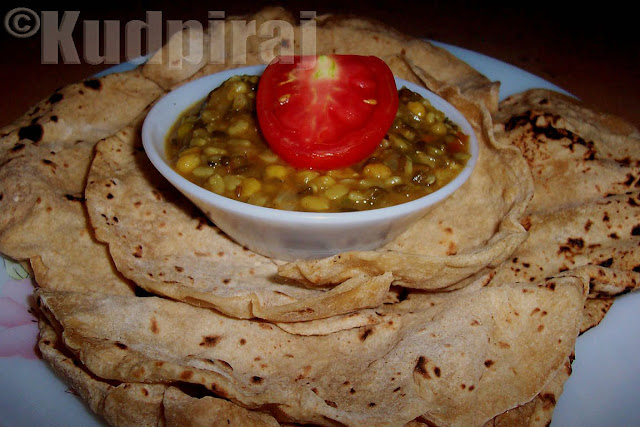Well, I need not introduce this to most of the foodies. It is a common dosa that is non oily, healthy tasty and is widely liked by all who have tasted it. Serve it with simple coconut chutney, green chutney, red chutney, sambar, veg curry, North Indian curry, daal, chicken curry, pork curry or just make jaggery syrup(Godda Ravo) or fill it with choorna(Jaggery and grated coconut mixture flavoured with cardamom powder). Paanpole or neer dose has its own versatility!
There are two types of Paanpole. The thicker one which is eaten with any accompaniment and the thin wafer like one that looks like paper tissue and tastes good with coconut chutney. To achieve thin ones, the batter should contain less amount of grated coconut in it and the rice used should be superior. Here's the recipe for the thick paanpole.
Ingredients:
Dosa rice - 2 cups
Grated coconut - 1 cup
Salt - To taste
Water - QS
Oil - Very little
Method:
Wash and soak rice for 2-3 hours.
Grind to a fine paste with grated coconut. Add enough water to make thin batter.
Batter should be as thin as milk.
Add salt to taste.
Heat a nonstick tawa.
Drizzle little oil and sprinkle water. Wipe with a cloth.
Pour a ladleful of the batter and tilt the tawa in a circular motion so that the batter spreads all over to form a thin crust.
Allow to roast on medium flame.
When the upper side becomes dry, remove the dosa either by holding the edge with your thumb and index finger or by using a dosa ladle.
Allow to cool down on a plate, doublefold like a napkin and serve.
There are two types of Paanpole. The thicker one which is eaten with any accompaniment and the thin wafer like one that looks like paper tissue and tastes good with coconut chutney. To achieve thin ones, the batter should contain less amount of grated coconut in it and the rice used should be superior. Here's the recipe for the thick paanpole.
Ingredients:
Dosa rice - 2 cups
Grated coconut - 1 cup
Salt - To taste
Water - QS
Oil - Very little
Method:
Wash and soak rice for 2-3 hours.
Grind to a fine paste with grated coconut. Add enough water to make thin batter.
Batter should be as thin as milk.
Add salt to taste.
Heat a nonstick tawa.
Drizzle little oil and sprinkle water. Wipe with a cloth.
Pour a ladleful of the batter and tilt the tawa in a circular motion so that the batter spreads all over to form a thin crust.
Allow to roast on medium flame.
When the upper side becomes dry, remove the dosa either by holding the edge with your thumb and index finger or by using a dosa ladle.
Allow to cool down on a plate, doublefold like a napkin and serve.






















































